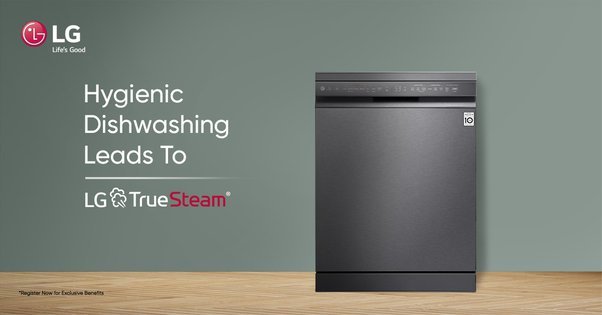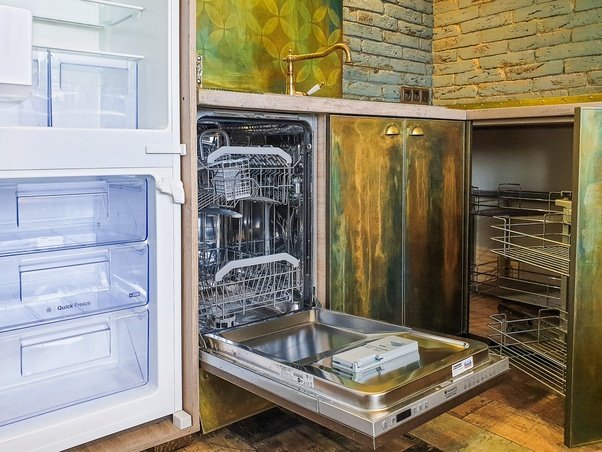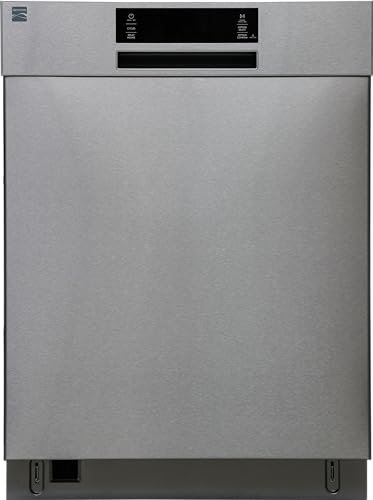Using a robot vacuum is an easy and convenient way to keep your floors clean without lifting a finger. These devices are equipped with sensors allowing them to navigate your home and clean up dirt, dust, and debris. If you’re going to own it, you must know how to use a robot vacuum at first. Here, we’ll provide you with some tips and tricks to help you get the most out of your robot vacuum.
The first thing you’ll need to do is set up your robot vacuum. Most models come with a charging dock that you’ll need to place in a central location in your home. Once you’ve done that, you can turn on your robot vacuum and let it charge up. Depending on the model you have, you may need to download an app to your phone or connect it to your home’s Wi-Fi network. Once you’ve done that, you can start using your robot vacuum to clean your floors.

Table of Contents
Choose the Right Robot Vacuum
When it comes to choosing the right robot vacuum, there are a few things you should consider. Here are some important factors to keep in mind:
Different Types Of Robot Vacuum
There are several types of robot vacuums available on the market. Some are designed for specific tasks, such as cleaning pet hair or hardwood floors. Others are more versatile and can handle a variety of surfaces and debris. It’s important to choose a vacuum that fits your needs. Consider the following:
- Pet hair: If you have pets, look for a robot vacuum with strong suction and a brushroll that can pick up pet hair.
- Hardwood floors: If you have hardwood floors, look for a vacuum with a soft brushroll that won’t scratch the surface.
- Carpet: If you have carpet, look for a vacuum with strong suction and a brushroll that can agitate the fibers to remove dirt and debris.
Assess Your Space Requirements
Another important factor to consider is the size of your home and the type of spaces you need to clean. Some robot vacuums are better suited for small apartments, while others are designed for larger homes. Consider the following:
- Battery life: If you have a large home, look for a vacuum with a long battery life so it can clean for an extended period without needing to recharge.
- Navigation: If you have a lot of furniture or obstacles in your home, look for a vacuum with advanced navigation technology that can avoid obstacles and navigate around your home efficiently.
- Bin size: If you have a lot of debris to clean up, look for a vacuum with a large dustbin so you don’t have to empty it as frequently.
Comparing Features and Prices
Finally, it’s important to compare features and prices to find the best robot vacuum for your needs and budget. Consider the following:
- Wi-Fi connectivity: Some robot vacuums can be controlled via a smartphone app or voice commands, while others can only be controlled manually.
- Scheduling: Look for a vacuum that allows you to schedule cleanings so you don’t have to remember to start it manually.
- Price: Robot vacuums can range in price from under $100 to over $1,000. Consider your budget and the features you need to find the best value for your money.
How To Set Up Your Robot Vacuum

When you first get your robot vacuum, you’ll need to set it up before you can start using it. Here are the steps you need to follow to get your robot vacuum up and running.
Unbox and Assemble
The first step is to unbox your robot vacuum and assemble it. The contents of the box will vary depending on the model you have, but most robot vacuums come with the vacuum itself, a charging dock, and a power cord.
To assemble your robot vacuum, follow the instructions in the user manual that came with your vacuum. This usually involves attaching the side brushes and main brush, as well as inserting the dustbin.
Install the Docking Station
Next, you’ll need to install the docking station. This is where your robot vacuum will return to when it’s finished cleaning or needs to recharge.
Choose a location for the docking station that is easily accessible and has a power outlet nearby. Make sure the docking station is placed on a flat, level surface.
Initial Configuration and Wi-Fi Setup
Once you’ve assembled your robot vacuum and installed the docking station, it’s time to set up your vacuum’s initial configuration and Wi-Fi connection.
To do this, follow the instructions in the user manual or app that came with your vacuum. You’ll typically need to connect your vacuum to your Wi-Fi network, set the date and time, and configure any other settings that are specific to your model.
Once your robot vacuum is set up and connected to your Wi-Fi network, you can start using it. You can control your robot vacuum through the app on your smartphone, or with voice commands if your vacuum is compatible with a voice assistant like Amazon Alexa or Google Assistant.
How To Operate Your Robot Vacuum

Using a robot vacuum can be a convenient and efficient way to keep your floors clean. In this section, we will cover the basics of operating your robot vacuum, including starting a cleaning cycle, setting cleaning schedules, and navigating the user interface.
Start a Cleaning Cycle
To start a cleaning cycle with your robot vacuum, you will first need to ensure that it is properly charged and turned on. Once it is powered on, you can either press the “Clean” button on the vacuum itself or use the accompanying mobile app to start a cleaning cycle.
During the cleaning cycle, the robot vacuum will move around your home, using sensors to detect obstacles and avoid them. It will also use its brushes and suction to pick up dirt and debris from your floors.
Set The Cleaning Schedules
Many robot vacuums allow you to set cleaning schedules so that they will automatically clean your home at specific times. This can be a convenient way to ensure that your floors are always clean without having to manually start a cleaning cycle each time.
To set a cleaning schedule, you must use the accompanying mobile app or the controls on the vacuum itself. You can typically set the days and times that you want the vacuum to clean, as well as adjust other settings such as the cleaning mode and suction power.
Navigate the User Interface
The user interface for your robot vacuum will vary depending on the model and manufacturer. However, most robot vacuums will have a few common features such as a power button, a clean button, and a docking station for charging.
To navigate the user interface, you will need to refer to the user manual or online resources provided by the manufacturer. This will typically include information on how to use the mobile app, how to adjust settings, and how to troubleshoot common issues.
Maintenance and Troubleshooting
Regular Cleaning and Care
To ensure that your robot vacuum works efficiently and lasts longer, it is important to perform regular cleaning and care. Here are some tips to follow:
- Clean the dustbin after every use. Emptying it regularly will prevent it from getting clogged and prolong the life of the robot vacuum.
- Check the filter and clean it at least once a week. If it is dirty or damaged, replace it immediately.
- Remove hair, dust, and debris from the brush roll and side brushes regularly. This will prevent them from getting tangled and reduce the chances of the robot vacuum malfunctioning.
- Clean the sensors and charging contacts with a soft cloth to ensure they are free of dust and debris.
Replacing Parts and Accessories
While regular cleaning and care can help keep your robot vacuum in good working order, some parts and accessories may need to be replaced over time. Here are some common parts that may need to be replaced:
- Filters: Depending on the model, filters may need to be replaced every three to six months. Check the manufacturer’s instructions to determine when to replace the filter.
- Brushes: Over time, brushes may become worn or damaged and will need to be replaced. Check the manufacturer’s instructions to determine when to replace the brush.
- Batteries: If the battery is not holding a charge or the robot vacuum is not running as long as it used to, it may be time to replace the battery. Check the manufacturer’s instructions to determine when to replace the battery.
Troubleshooting Common Issues
Even with regular cleaning and care, your robot vacuum may encounter some common issues. Here are some troubleshooting tips:
- If the robot vacuum is not charging, check to make sure that the charging contacts are clean and free of dust and debris. If the contacts are dirty, clean them with a soft cloth.
- If the robot vacuum is not picking up dirt or debris, check to make sure that the dustbin is empty and the filter is clean. Also, check to make sure that the brushes are not tangled or damaged.
- If the robot vacuum is not navigating properly, make sure that the sensors are clean and free of dust and debris. Also, make sure that there are no obstacles in its path.
FAQ
What are the steps to initiate a cleaning cycle on a robot vacuum?
To initiate a cleaning cycle on a robot vacuum, you need to press the “clean” button on the robot or on the companion app. Some robot vacuums may also have a remote control to initiate a cleaning cycle. Once the cleaning cycle starts, the robot vacuum will move around the room and clean the floor.
How often is it recommended to run a robot vacuum for optimal cleanliness?
It is recommended to run a robot vacuum at least once a day for optimal cleanliness. However, the frequency of cleaning depends on the size of the room, the number of people and pets in the house, and the amount of dirt and debris on the floor.
What preparations are needed in a home before using a robot vacuum?
Before using a robot vacuum, you need to remove any obstacles or clutter from the floor, such as toys, shoes, and cords. You should also close the doors to any rooms you don’t want the robot vacuum to enter. Additionally, you may want to set up virtual walls or magnetic strips to create boundaries for the robot vacuum.
Is it possible to operate a robot vacuum without its companion smartphone app?
Yes, it is possible to operate a robot vacuum without its companion smartphone app. Most robot vacuums have physical buttons on the robot itself or come with a remote control to start and stop a cleaning cycle.
How do you properly maintain and clean a robot vacuum to ensure its longevity?
To ensure the longevity of a robot vacuum, you should regularly clean and maintain it. This includes emptying the dustbin, cleaning the filters, and removing any hair or debris from the brushes. You should also check the sensors and wheels for any dirt or debris that may interfere with the robot’s movement.
What are the guidelines for setting up a Shark AI Robot vacuum?
To set up a Shark AI Robot vacuum, you need to download and install the SharkClean app on your smartphone. Once the app is installed, you need to connect the robot vacuum to your home Wi-Fi network. You can then use the app to start and stop cleaning cycles, set schedules, and adjust the settings of the robot vacuum.




